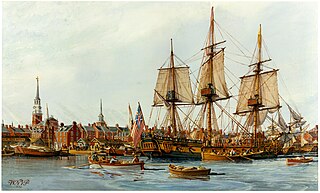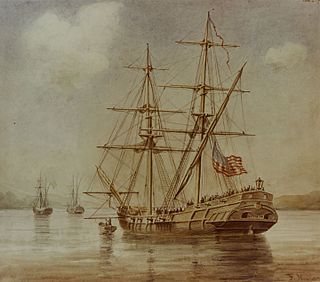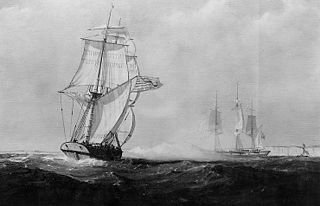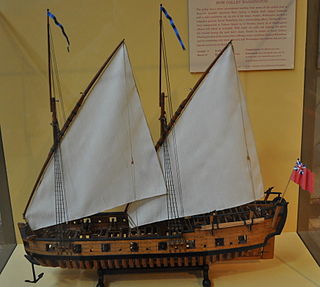 W
WAlfred was the merchant vessel Black Prince, named for Edward, the Black Prince, and launched in 1774. The Continental Navy of what would become the United States acquired her in 1775, renamed her Alfred after 9th century English monarch Alfred the Great, and commissioned her as a warship. She participated in two major actions, the battle of Nassau, and the action of 6 April 1776. The Royal Navy captured her in 1778, took her into service as HMS Alfred, and sold her in 1782. She then became the merchantman Alfred, and sailed between London and Jamaica.
 W
WThe first Alliance of the United States Navy was a 36-gun sailing frigate of the American Revolutionary War.
 W
WAndrew Doria was a brig purchased by the Continental Congress in November 1775. She is most famous for her participation in the Battle of Nassau—the first amphibious engagement by the Continental Navy and the Continental Marines—and for being the first United States vessel to receive a salute from a foreign power.
 W
WBonhomme Richard, formerly Duc de Duras, was a warship in the American Continental Navy. She was originally an East Indiaman, a merchant ship built in France for the French East India Company in 1765, for service between France and Asia. She was placed at the disposal of John Paul Jones on 4 February 1779, by King Louis XVI of France as a result of a loan to the United States by French shipping magnate Jacques-Donatien Le Ray.
 W
WThe first USS Boston was a gundalow built at Skenesborough, New York, in 1776, with a crew of 45 for General Benedict Arnold's short-lived Lake Champlain Fleet. She took part in the Battle of Valcour Island that delayed the British invasion. She was probably commissioned sometime early in August 1776, with a Captain Sumner in command.
 W
WThe second USS Boston was a 24-gun frigate, launched 3 June 1776 by Stephen and Ralph Cross, Newburyport, Massachusetts, and completed the following year. In American service she captured a number of British vessels. The British captured Boston at the fall of Charleston, South Carolina, renamed her HMS Charlestown, and took her into service. She was engaged in one major fight with two French frigates, which she survived and which saved the convoy she was protecting. The British sold Charlestown in 1783, immediately after the end of the war.
 W
WThe first USS Cabot of the United States was a 14-gun brig, one of the first ships of the Continental Navy, and the first to be captured in the American Revolutionary War in the Battle off Yarmouth (1777).
 W
WThe first USS Columbus was a ship in the Continental Navy. Built as a merchant ship at Philadelphia in 1774 as Sally, she was purchased from Willing, Morris & Co., for the Continental Navy in November 1775, Captain Abraham Whipple was given command.
 W
WUSS Confederacy was a 36-gun sailing frigate of the Continental Navy in the American Revolutionary War. The British Royal Navy captured her in March 1781, took her into service for about half-a-year as HMS Confederate, and broke her up in 1782.
 W
WUSS Congress was a row galley that served the Continental Navy during the American Revolution.
 W
WUSS Fly was an eight-gun sloop in the Continental Navy. She was part of a squadron that raided the port of Nassau and engaged the 20-gun HMS Glasgow.
 W
WThe second Hancock was one of the first 13 frigates of the Continental Navy. A resolution of the Continental Congress of British North America 13 December 1775 authorized her construction; she was named for John Hancock. In her career she served under the American, British and French flags.
 W
WThe schooner Hannah was the first armed American naval vessel of the American Revolution and is claimed to be the founding vessel of the United States Navy. She was a fishing schooner owned by John Glover of Marblehead, Massachusetts and was named for his daughter, Hannah Glover. The crew was drawn largely from the town of Marblehead, with much of the ships ammunition being stored in Glover's warehouse now located at Glover's Square in Marblehead before being relocated to Beverly, Massachusetts.
 W
WIndien (1778), often L'Indien, was a frigate built for the U.S. Commissioners in France – Benjamin Franklin, Silas Deane, and Arthur Lee – to a design by the French naval architect Jacques Boux. She was laid down early in 1777 by a private shipyard in Amsterdam and launched in February 1778. Apparently she was built with the scantlings and lines of a small 74-gun Third Rate ship of the line but was a frigate in construction. In 1780 the Duke of Luxembourg chartered her to the navy of South Carolina and she sailed as South Carolina.
 W
WThe first USS Lexington of the Thirteen Colonies was a brigantine purchased in 1776. The Lexington was an 86-foot two-mast wartime sailing ship for the fledgling Continental Navy of the Colonists during the American Revolutionary War (1775–1783).
 W
WThe first USS Mosquito was believed to have been purchased at Philadelphia late in 1775 for the new Continental Navy. She patrolled the Delaware River until destroyed during the British conquest of Philadelphia led by the Howe brothers and completed by them in October 1777. DANFS has identified this ship as a sloop, yet records from the period which are believed to refer to the ship have consistently identified her as being a schooner. These records also provide a bit more detail of her fate, indicating she was burned after capture in July 1777 during Royal Navy operations along the Delaware River.
 W
WNancy was an American sailing vessel, noted in sources as either a brig or a brigantine, that was chartered to transport war supplies during the American Revolutionary War. After learning that independence had been declared, her captain, according to his daughter, raised the first American flag in a foreign port. Evading British capture, she was later intentionally destroyed with a huge blast on June 29, 1776, during the Battle of Turtle Gut Inlet near Cape May, New Jersey.
 W
WUSS Providence was a sloop-of-war in the Continental Navy, originally chartered by the Rhode Island General Assembly as Katy. The ship took part in a number of campaigns during the first half of the American Revolutionary War before being destroyed by her own crew in 1779 to prevent her falling into the hands of the British after the failed Penobscot Expedition.
 W
WUSS Raleigh was one of thirteen ships that the Continental Congress authorized for the Continental Navy in 1775. Following her capture in 1778, she served in the Royal Navy as HMS Raleigh. The ship is featured on the flag and seal of New Hampshire.
 W
WThe first USS Randolph was a 32-gun frigate in the Continental Navy named for Peyton Randolph.
 W
WUSS Ranger was a sloop-of-war in the Continental Navy in active service in 1777–1780, the first to bear her name. Built at Portsmouth Naval Shipyard on Badger's Island in Kittery, Maine, she is famed for the one-ship raiding campaign by Captain John Paul Jones, during naval operations of the American Revolutionary War. In six months spent primarily in British waters she captured five prizes, staged a single failed attack on the English mainland at Whitehaven, and caused Royal Navy ships to be dispatched against her in the Irish Sea.
 W
WUSS Reprisal, 18, was the first ship of what was to become the United States Navy to be given the name promising hostile action in response to an offense. Originally the merchantman brig Molly, she was purchased from Robert Morris by the Marine Committee of the Continental Congress on March 28, 1776, renamed Reprisal, and placed under the command of Captain Lambert Wickes.
 W
WThe second USS Revenge was a cutter in the Continental Navy and later a privateer.
 W
WUSS Washington was a lateen-rigged, two-masted galley in the service of the Continental Congress during the American Revolutionary War. Washington was capable of propulsion by sail or by the rowing of oarsmen. During a battle with British warships, Washington "struck her colors" and was captured by the British.
 W
WUSS Washington was a large row galley, with a rowing crew of 60, that was placed into service under the control of the Continental Congress in 1776. During this age of sail, row galleys were highly maneuverable compared to sailing ships whose movements were dependent on the wind. Washington's war record consisted of an attack on several British warships, and, after finding itself on the losing side of the battle, the row galley rowed away, out of danger. There is no further report of her efforts for the Continental Navy.
 W
WUSS Wasp was originally a merchant schooner named Scorpion, built at Baltimore, and purchased under authority from the Second Continental Congress dated 2 December 1775 by Col. Benjamin Harrison sometime between 2 and 18 December 1775, the first US naval ship to be given that name. She was outfitted in Baltimore from December 1775 to early 1776; and commissioned in December 1775 or January 1776, Capt. William Hallock in command.